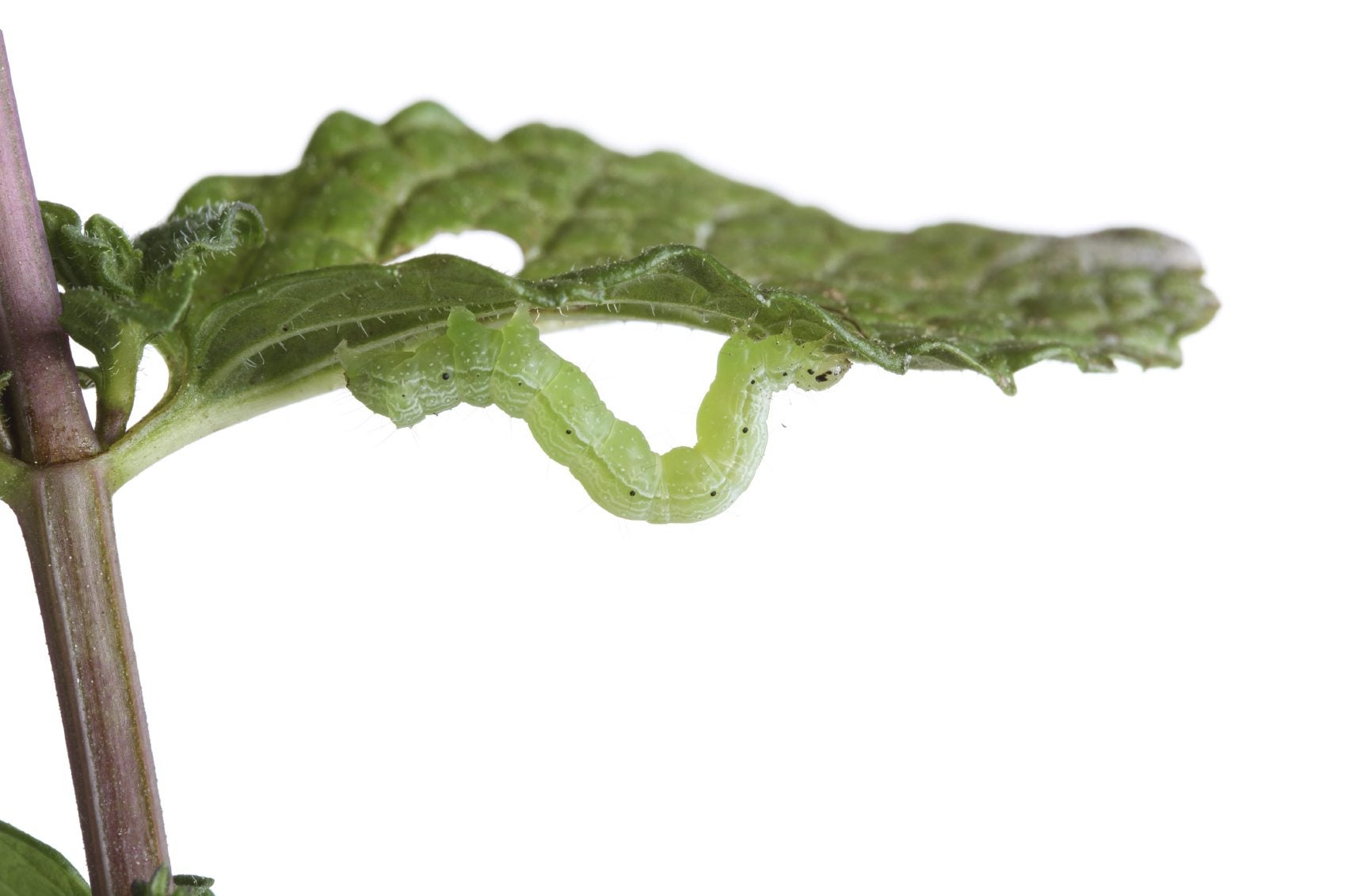Mint Plant Worms: How To Treat Green Worms On Mint Plants

Mint is a rapidly growing herb that is nearly indestructible. This aromatic plant likes to be cut back and really needs to be or it may take over the garden. On occasion, critters -- often worms -- decide they like mint as much as you do. What can be done about worms eating a mint plant and what might these worms be? Let’s learn more.
Help, There are Green Worms on Mint Plants!
Mint should be grown in partial shade to full sun and is extremely hardy. It can survive temperatures down to -29 degrees F. (-33 C.). Believe me when I say that it can overtake a garden space unless it is controlled. Plant this aromatic herb in soil that is slightly acidic with a pH between 6.0 and 7.0. Even though it’s a tough plant, like all plants it may become afflicted with some sort of disease or pest. Some of the less desirable nibblers include aphids, thrips, slugs, and snails, and even bunnies love to nibble on the sweet-smelling plant. If you witness damage to the plant and rule out the above culprits, another invader might just be worms in the mint plant. Worms in mint plants may be visible as small, green “inch” worms. They look kind of cute but they have a voracious appetite and if you hanker mojitos all summer long, they must be stopped! How can you get rid of these little, green worms on the mint plant?
Treatment for Worms Eating Mint Plant
Well, you can always visually hunt for them and then squish the worms. It may take a while with this tactic to eradicate the pests, but at least you aren’t poisoning the mint or surrounding area with chemicals. Another organic approach is to use Bacillis thuringiensis. Yes, it’s a mouthful, but all it really is a bacterium that will kill off the caterpillars with little to no effect on you, wildlife, pollinators, and other beneficial insects. The downside to this is that you must cut back the mint to the ground prior to applying Bacillis thuringiensis, or Bt. No worries though, as the mint will rapidly regroup. What if you can’t see any worms eating the mint plant? The culprit might still be mint plant worms – cutworms to be exact. Cutworms are nocturnal feeders, and then post-feast hide in the soil during the day at the plant’s base or in its debris. If you dig down a little bit, you may find cutworm larvae. They are 1 to 2 inches (2.5 to 5 cm.) in length with a wide range of colors and patterns. A telltale sign it’s a cutworm? They curl into a C-shape when disturbed. Cutworms aren’t picky about their diet and will eat all manner of veggies as well as other plants. They attack my rhodies on a regular basis. So how can you get rid of cutworms? Maintenance of the garden area is of primary importance and the first step. Clean out any plant debris, ridding the worms of a cozy place to hide. Then spread diatomaceous earth around the base of the mint plants. The sharp, diatomaceous soil will cut the insects if they try and crawl over it. It will also keep the snails and slugs at bay if they are a problem for you too. You can also go out at night with a flashlight and hand pluck the larvae from the plant. Lastly, of course, if you choose not to go the organic route, there are insecticides that can be applied to kill the larvae, but why would you deny yourself the pleasure of crawling around in the dark with a flashlight and squishing worms?
Gardening tips, videos, info and more delivered right to your inbox!
Sign up for the Gardening Know How newsletter today and receive a free copy of our e-book "How to Grow Delicious Tomatoes".

Amy Grant has been gardening for 30 years and writing for 15. A professional chef and caterer, Amy's area of expertise is culinary gardening.
-
 Terrifically Tubular Flowers For Hummingbirds: 9 Tube-Flowered Plants To Attract Hummers
Terrifically Tubular Flowers For Hummingbirds: 9 Tube-Flowered Plants To Attract HummersGrowing tubular flowers for hummingbirds helps you create the optimum feeding conditions for your winged friends. Here are nine tubed delights for hummers
By Tonya Barnett
-
 How To Grow Hydroponic Tomatoes For Fresh Indoor Harvests – No Soil Required
How To Grow Hydroponic Tomatoes For Fresh Indoor Harvests – No Soil RequiredLearning how to grow tomatoes in water is easy and allows you to harvest fresh-home-grown produce in every season without any mess.
By Ellen Wells